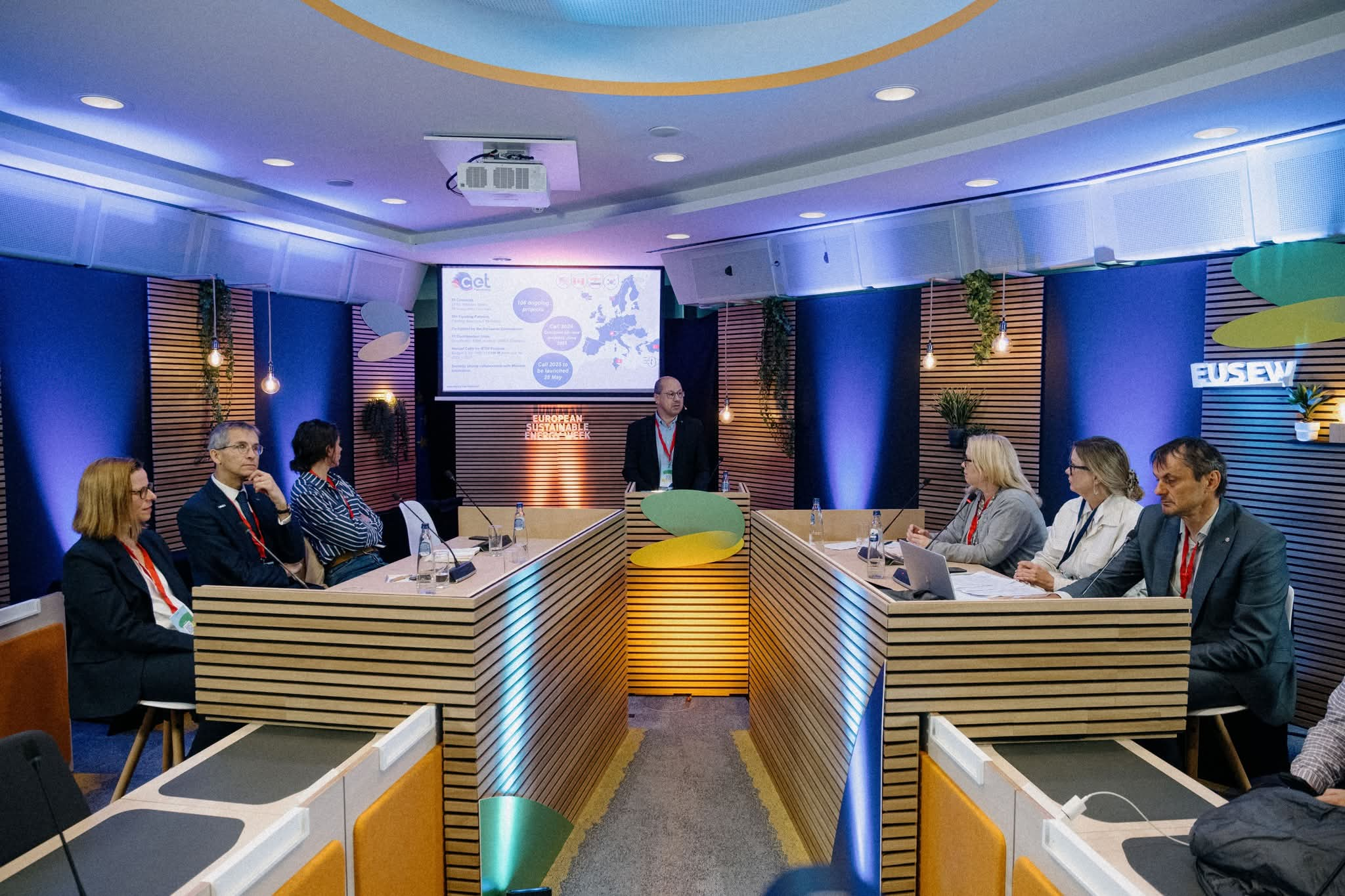
At the 2025 EU Sustainable Energy Week (EUSEW), the policy session “Electrifying Industry: Unlocking Flexibility and Innovation for a Decarbonised Future”, organised by the SET Plan Implementation Working Group on Sustainable and Efficient Energy use in Industry (IWG6), in cooperation with ETIP SNET, IWG4, IWG DC, brought together policymakers, industry leaders, researchers, and innovators to explore the vital role of industrial electrification and energy flexibility in achieving Europe’s climate and competitiveness goals.
The session, moderated by Mugurel George Paunescu from DG ENER and Maria Laura Trifiletti (Zabala), featured experts including Franz Hörzenberger (ArcelorMittal), Susanne Windischberger (AIT), Hartwig Stammberger (Eaton), Natalie Samovich (AIOTI/ETIP SNET), Åsa Bergérus Rensvik (Swedish Energy Agency), and Mathilde Chareyron (Sympower).
The discussion examined how industry can align with rising shares of renewable energy while remaining economically viable. Participants stressed the urgent need for coordinated action across policy, investment, and technology to accelerate industrial electrification and unlock system-wide flexibility. Key challenges such as high electricity costs, grid congestion, and limited access to flexibility markets, particularly for low-voltage industrial users, were addressed, alongside the growing importance of clean electricity integration as industrial demand is expected to rise by 50% over the next decade.
Speakers shared insights on emerging solutions, including DC microgrids, digital platforms, and demand-side response. Aggregators like Sympower demonstrated how industrial consumers can actively participate in balancing markets and monetise their flexibility. The session also highlighted key EU initiatives such as the Clean Industrial Deal and the upcoming Action Plan on Affordable Energy, which are essential to support this transition. The Clean Energy Transition Partnership was recognised for advancing coordinated research and innovation, supporting green hydrogen adoption, and promoting integrated energy systems.
Susanne Windischberger underlined the need for collaboration and adaptability across the system, stating:
“Both sides, the power grid and the industry actors, need to learn to operate their systems at its limits and they need to interact and cooperate to do so.”
Throughout the session, flexibility was identified not only as a balancing tool but as a key driver of grid resilience and industrial competitiveness. The conversation emphasised the importance of regulatory reform, cross-border coordination, strategic investment, and improved governance, particularly at the distribution grid level. Flexibility-by-design in new industrial facilities and clear market signals were cited as crucial to expanding participation and scaling impact.
The event concluded with a strong call for a whole-system approach. Innovation, risk-sharing, and public-private collaboration were recognised as essential to making industrial decarbonisation both achievable and profitable. With industrial electrification projected to reach 35% by 2030 and 60% by 2050, the session reinforced the need to accelerate implementation, supported by robust policy and smart regulation.
Watch the full recording to explore key insights and thoughtful perspectives shared during the session: https://www.youtube.com/live/CxoVHOayBiQ
Photo credits: EUSEW
< Back to all entries
